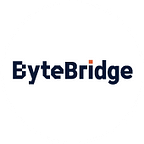How Data Labeling Service Empowers Robotaxi Industry?
How Data Annotation Services Fuel Self-Driving Industry 2021-Part4
Will Cruise’s Commercial Test be Far Behind When it Realizes the Full Driverless Vehicle Carrying Passengers?
California’s First Unmanned Self-driving Vehicle Appeared, the Next Phase Would be Commercial Testing
Recently, the California Public Utility Commission (CPUC) announced on Twitter that Cruise can provide driverless car passenger service without the participation of safety officers.
Cruise then twittered, saying it was the first company to get such a license.
Earlier, Cruise CEO Dan Ammann said in a blog post that although Cruise is not the first company to get a fully automatic driving test license, they want to be the first company not to use safe drivers in San Francisco.
It is worth noting that Waymo is listed in the list of applications published by CPUC as well, and has passed the exemption application like Cruise.
Competing for California’s First
“Today, we are honored to be the first company to obtain an autonomous driving service license to test passenger transport,” Cruise’s head of government affairs Prashanthi Raman said in a statement.
Specifically, Cruise has obtained the test license of the California motor vehicle authority (DMV)’s and the passenger service license of CPUC’s automatic driving.
Cruise has been recognized by DMV and CPUC, which means it has become the first company to carry out an automatic driving test with the participation of passengers. However, we need to know that Cruise is still unable to charge passengers any fees at present.
CPUC has certain requirements for the automatic driving companies that have obtained this license. Cruise and other companies involved in the test must submit quarterly reports on passenger-carrying operations and a plan on how to provide safety protection for passengers.
As a matter of fact, Cruise put forward the plan of launching all unmanned Robotaxi services in 2019 and postponed it in 2020. At that time, Dan Ammann, its chief executive, said in his blog that, for performance and safety reasons, although the US regulatory authorities had lowered down some requirements, the plan still needed a delay.
After nearly two years, Cruise finally got what he wanted.
The passenger-carrying plan is about to be realized, and Cruise may promote the commercialization test of the driverless vehicle in the next step.
Cruise filed an application to the California motor vehicle administration on March 29, 2021, asking for permission of charging services. According to Cruise’s application, its fully driverless vehicles will operate in some special situations, such as late-night, early morning in “certain routes” under good weather conditions” with speeds of 30 miles/h.
At present, the California motor vehicle administration has not yet approved its application. After that, Cruise needs CPUC permission to start commercial testing. It is not clear that whether Cruise will become the first commercial operation company this time. Waymo, its old rival, is on the same starting line.
In January 2021, Microsoft made a decisive investment and injected $2 billion into Cruise. In addition, Microsoft will provide Cruise with AWS Azure cloud computing platform to improve profitability.
“The progress of digital technology is redefining all aspects of our work and life, including how we transport people and goods. As the preferred cloud service for Cruise and General Motors, we will help them expand their scale, and make self-driving travel the mainstream,” Satya NADELLA, CEO of Microsoft, said in the cooperation statement.
The High Volume of Structured Data Required
Last year, at the CVPR 2019, Andrej Karpathy, the Senior Director of AI at Tesla responded to the question below:
how to estimate the volume of labeled data required to train and validate the self-driving cars for a particular scenario?
378 hours of data.
The more accurate annotation is, the better algorithm performance will be.
The mainstream algorithm model of autonomous driving is mainly based on supervised deep learning. It is an algorithm model that derives the functional relationship between known variables and dependent variables. A large amount of structured labeled data is required to train and tune the model.
On this basis, if you want to make self-driving cars more “intelligent”, and form a closed loop of the business model for self-driving applications that can be replicated in different vertical landing scenarios, the model needs to be supported by massive and high-quality real road data.
In the field of autonomous driving, data annotation scenes usually include changing lanes and overtaking, passing intersections, unprotected left and right turn without traffic light control, and some complex long-tail scenes such as vehicles running red lights, pedestrians crossing the road, and roadsides as well as illegally parked vehicles, etc.
Common Data Labeling Types Include:
- 2D Bounding Boxes
- Lane Marking
- Video tracking annotation
- Point Annotation
- Semantic Segmentation
- 3D Object Recognition
- 3D Segmentation
- Sensor Fusion: Sensor Fusion Cuboids/Sensor Fusion Segmentation/Sensor Fusion Cuboids Tracking
End
Outsource your data labeling tasks to ByteBridge, you can get the high-quality ML training datasets cheaper and faster!
- Free Trial Without Credit Card: you can get your sample result in a fast turnaround, check the output, and give feedback directly to our project manager.
- 100% Human Validated
- Transparent & Standard Pricing: clear pricing is available(labor cost included)
Why not have a try?
Reference: https://tech.ifeng.com
Relevant Articles:
1 Introduction of Giant Self-driving Company Waymo
2 Either Algorithm or Calculation Force is more Important for Automatic Driving?
3 Which One is More Important to Automatic Driving, Algorithm or Computing Power
4 How Data Labeling and Annotation Services Empower Self-Driving Bus?
5 Labeling Service Case Study — Video Annotation — License Plate Recognition
